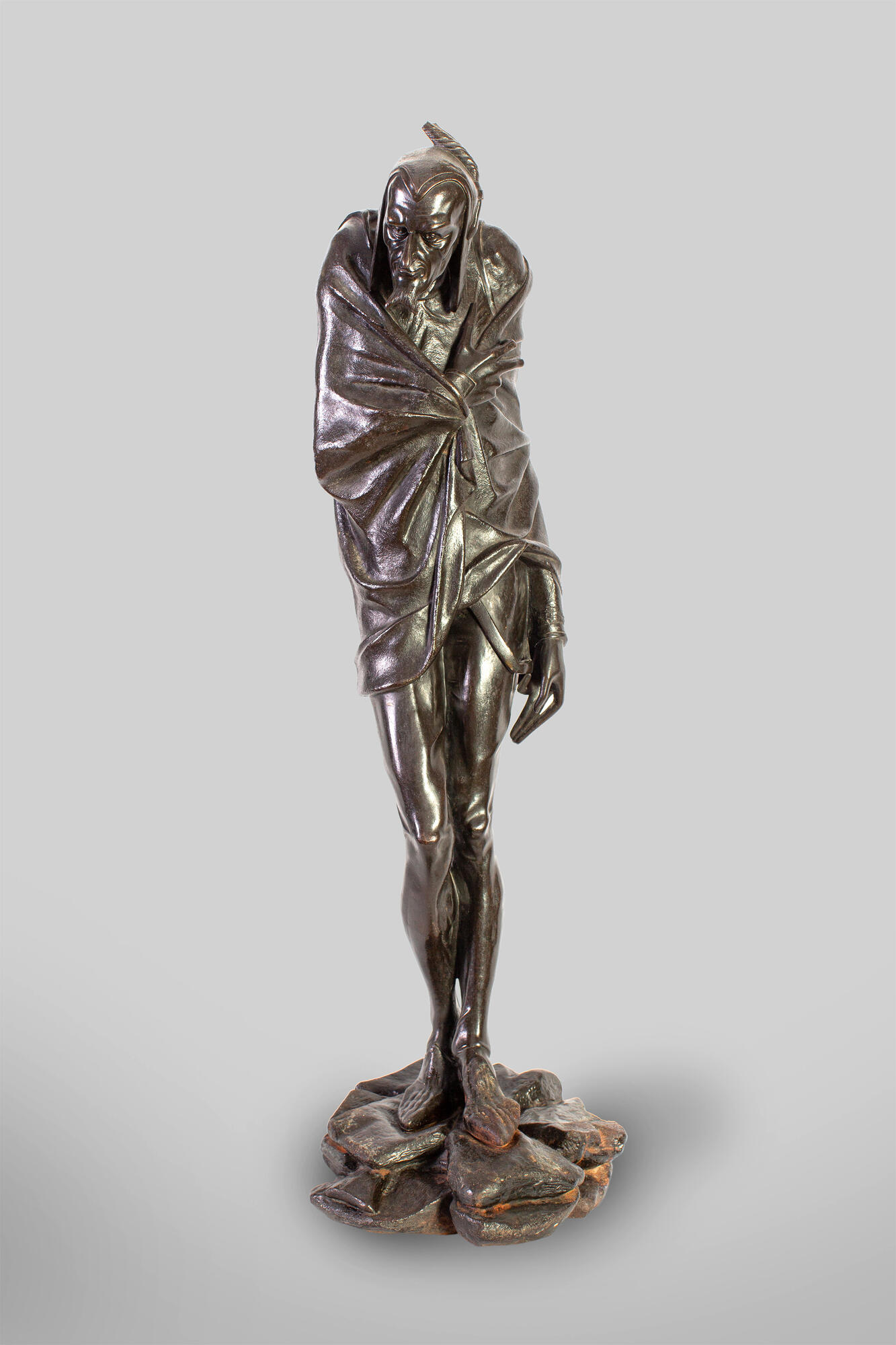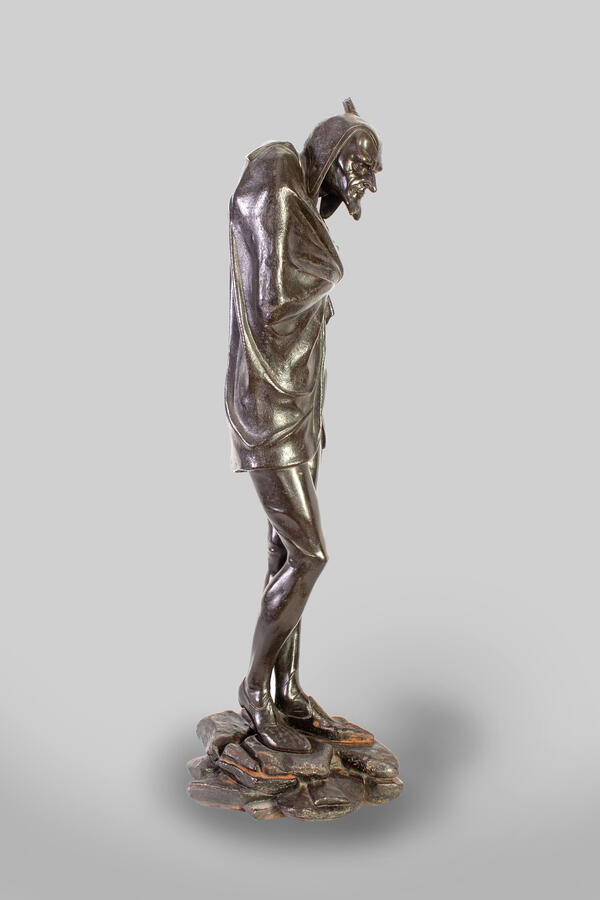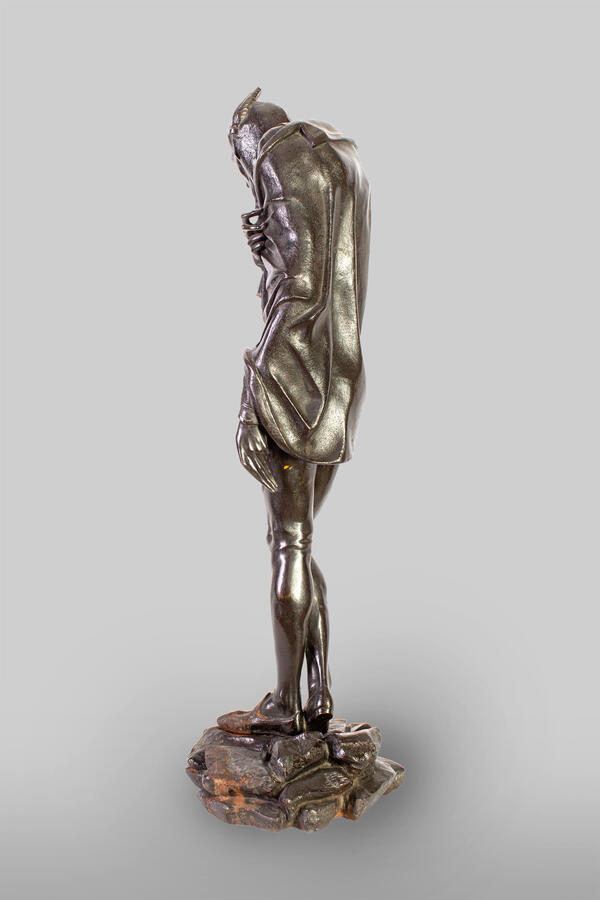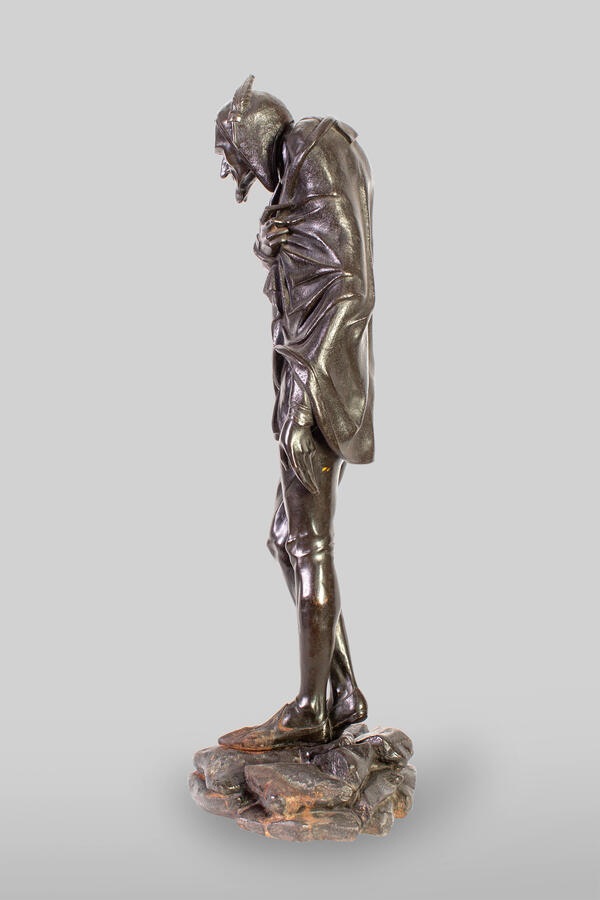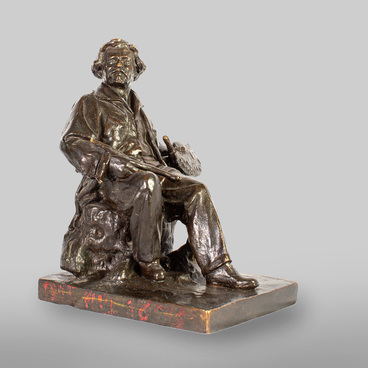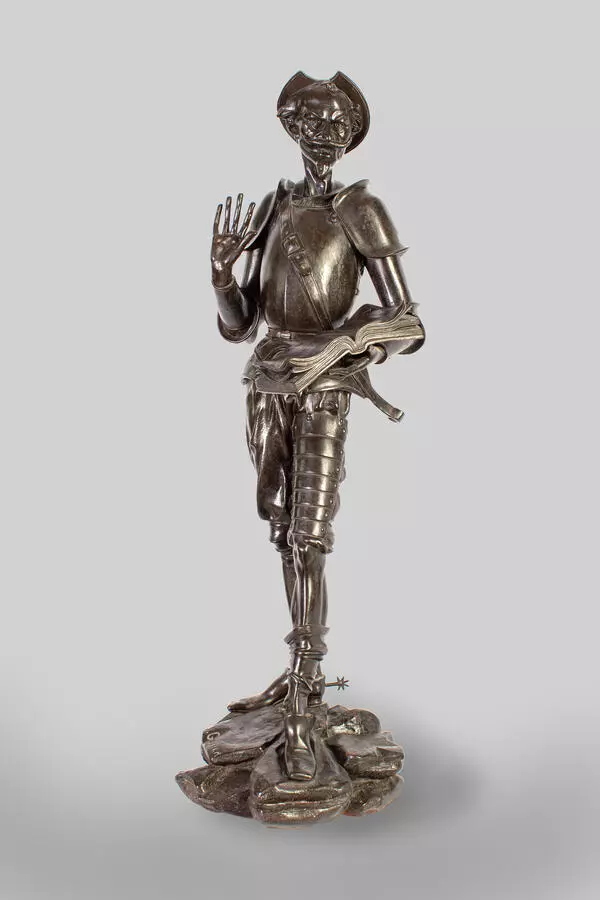The cast-iron figurine “Mephistopheles”, presented in the collection of the Tambov Art Gallery, is one of the most famous Kasli casting works made by foreign sculptors. The work was created by the French sculptor Jacques-Louis Gauthier (1831–1872).
Jacques-Louis Gauthier was a student of the French sculptor François Rude, worked in the genres of portrait and decorative sculpture, and created models for the Van Mons Bronze Foundry in Paris. The sculptor participated in the exhibitions of the Paris Salon (between 1850 and 1868), where he made his debut with a bronze maquette called “Poverty”. He mainly exhibited portrait busts and decorative pieces.
Mephistopheles is an evil spirit from the Northern Europe mythology of the Renaissance period. In 1587, he became known as a character in the German folk book “The Tale of Dr. Faust…” but enjoyed even greater popularity thanks to the philosophical tragedy “Faust” by Johann Wolfgang von Goethe.
The presented sculpture “Mephistopheles” was cast in 1899, when work was underway to create the famous cast-iron pavilion, designed by Yevgeny Baumgarten as a display case of the Kyshtym mining district for the 1900 Paris Exposition. At the end of the exhibition, the pavilion was awarded the Grand Prix in the Mining and Metallurgy Section. The figurine is the result of work done by the plant’s best workers. “Mephistopheles” was molded by V. Kuznetsov, who had made round columns for the pavilion. The figurine was bought together with the sculpture “Don Quixote” from E.I. Dabich in 1920. The expressive outlines of the figure convey a particular mood, yet the sculptor could not avoid a “certain influence of opera clichés.” The expressiveness of the image was created through the high quality of molding, which retained a subtle sculpturesque sense of form, and the noble black color, characteristic of Kasli products, which fit the material perfectly.
The figurine “Mephistopheles” goes together with another Jacques-Louis Gauthier’s sculpture called “Don Quixote”, which is also on display. The two embody the main ethical concepts of good and evil. “Mephistopheles” and “Don Quixote” enjoyed great success and had been produced at the Kasli plant for over a century.
Jacques-Louis Gauthier was a student of the French sculptor François Rude, worked in the genres of portrait and decorative sculpture, and created models for the Van Mons Bronze Foundry in Paris. The sculptor participated in the exhibitions of the Paris Salon (between 1850 and 1868), where he made his debut with a bronze maquette called “Poverty”. He mainly exhibited portrait busts and decorative pieces.
Mephistopheles is an evil spirit from the Northern Europe mythology of the Renaissance period. In 1587, he became known as a character in the German folk book “The Tale of Dr. Faust…” but enjoyed even greater popularity thanks to the philosophical tragedy “Faust” by Johann Wolfgang von Goethe.
The presented sculpture “Mephistopheles” was cast in 1899, when work was underway to create the famous cast-iron pavilion, designed by Yevgeny Baumgarten as a display case of the Kyshtym mining district for the 1900 Paris Exposition. At the end of the exhibition, the pavilion was awarded the Grand Prix in the Mining and Metallurgy Section. The figurine is the result of work done by the plant’s best workers. “Mephistopheles” was molded by V. Kuznetsov, who had made round columns for the pavilion. The figurine was bought together with the sculpture “Don Quixote” from E.I. Dabich in 1920. The expressive outlines of the figure convey a particular mood, yet the sculptor could not avoid a “certain influence of opera clichés.” The expressiveness of the image was created through the high quality of molding, which retained a subtle sculpturesque sense of form, and the noble black color, characteristic of Kasli products, which fit the material perfectly.
The figurine “Mephistopheles” goes together with another Jacques-Louis Gauthier’s sculpture called “Don Quixote”, which is also on display. The two embody the main ethical concepts of good and evil. “Mephistopheles” and “Don Quixote” enjoyed great success and had been produced at the Kasli plant for over a century.
